The Blue City, Sun City, or The Entrance to the Thar, this is how Jodhpur is known. It is the chaotic city founded by the head of the Rathore Rao Jodha clan, which is protected by the immense Mehrangarh Fort.
Rajasthan in its purest form, the second largest city in this state, is a real challenge for those who are easily stressed. The color of the walls of the houses, which once served to distinguish those of the Brahmins, is now used by most inhabitants, they say, to avoid the heat and mosquito infestations in a city where the weather conditions can be stifling at times.
It took us several trips to India to set foot on the dusty streets of Jodhpur, all full of shops, havelis and temples, luckily in a mild month of December.
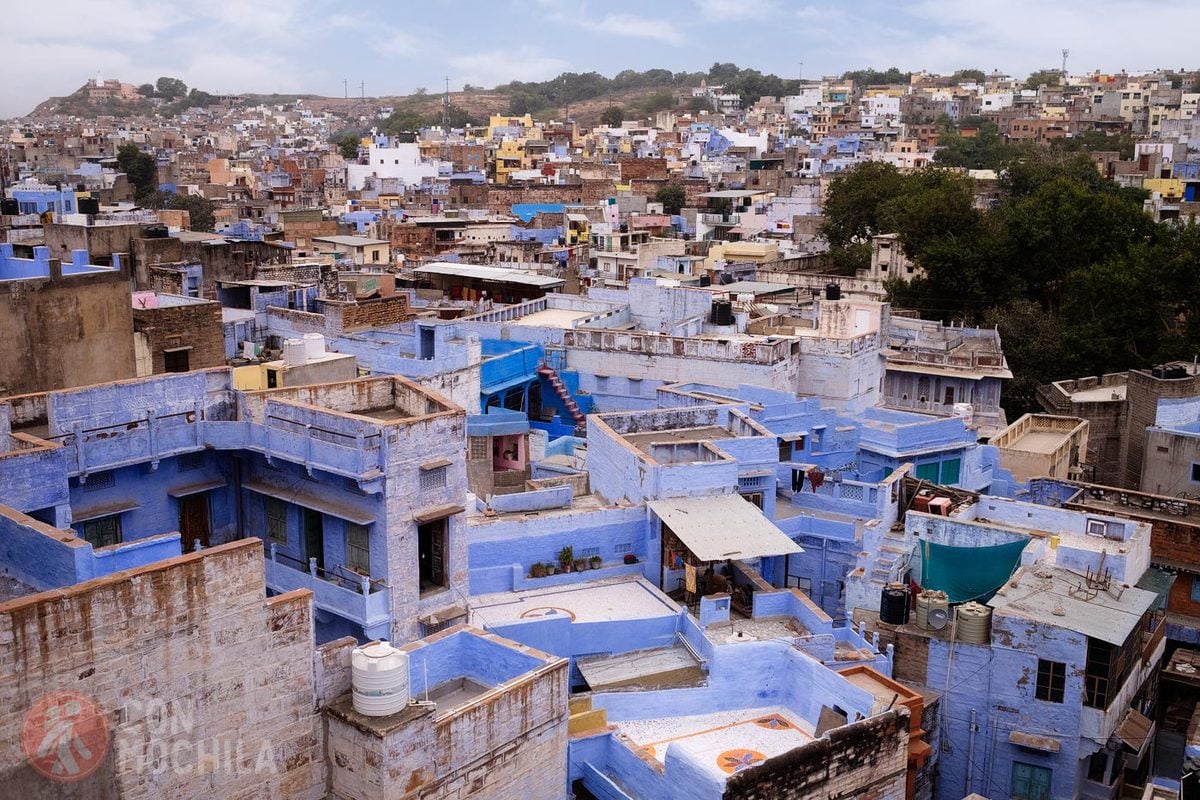
Now that we know about it, we would definitely include it in any itinerary through northern India. If you want to know why, be sure to read this guide.
Jodhpur, located in a desert area in the state of Rajasthan, has an extremely hot climate for most of the year.
We know that the subject of visas can be somewhat confusing, especially for India, where obtaining one is an essential requirement for entry. In the article on how to obtain an Indian visa step by step (coming soon) you have information on how to apply for one online for up to 5 years.
It’s essential to travel to India with comprehensive insurance. We were among the first to offer the popular IATI discount, and you can now get it with Heymondo Travel Insurance as well.
You can find more information about both companies through the links provided above, or you can access the discount directly using the buttons below (in both cases, you’ll see the reduced final price on their website):
While many hotels, guesthouses, and restaurants in India offer free Wi-Fi, some travelers prefer or need a constant connection. We’ve included details on obtaining a eSIM India card with unlimited data (from Holafly) or with fixed data but cheaper (from Saily).
If you want to get it directly, here’s the link (with a discount) for both companies:
The safest and most comfortable option if you are traveling through Rajasthan is the train. Remember that, if the journey takes several hours, you have the option of buying a train ticket in one of the sleeper classes (sleeper or 3rd class). Don’t worry about falling asleep, in the morning you will be woken up by the man who says chai, chai chai, chai, chaai…
Buses arrive from many destinations in Rajasthan, but be warned that road travel in India is a risky sport. Don’t sit in the front row if you’re sensitive, or you’ll find yourself praying for your life at every turn… Driving in this country is unbelievable. To get to Jodhpur from other cities in India, there are several bus services, here are some of them.
Jodhpur has an airport (JDH) very close to the city, which may be an option for you if you are in another state, but is there any experience that can beat spending more than 12 hours in a train carriage surrounded by families and vendors of all kinds?
Mehrangarh Fort is probably one of the most impressive forts in Rajasthan, and also the largest. Its massive walls, five and a half centuries old, stand on a 125-meter-high hill overlooking the city and can be seen from every terrace.
The entrance fee is not exactly cheap (around 600 rupees for foreigners), but with an audio guide you will have an entertaining walk through the fort while discovering its history, so it is worth entering.
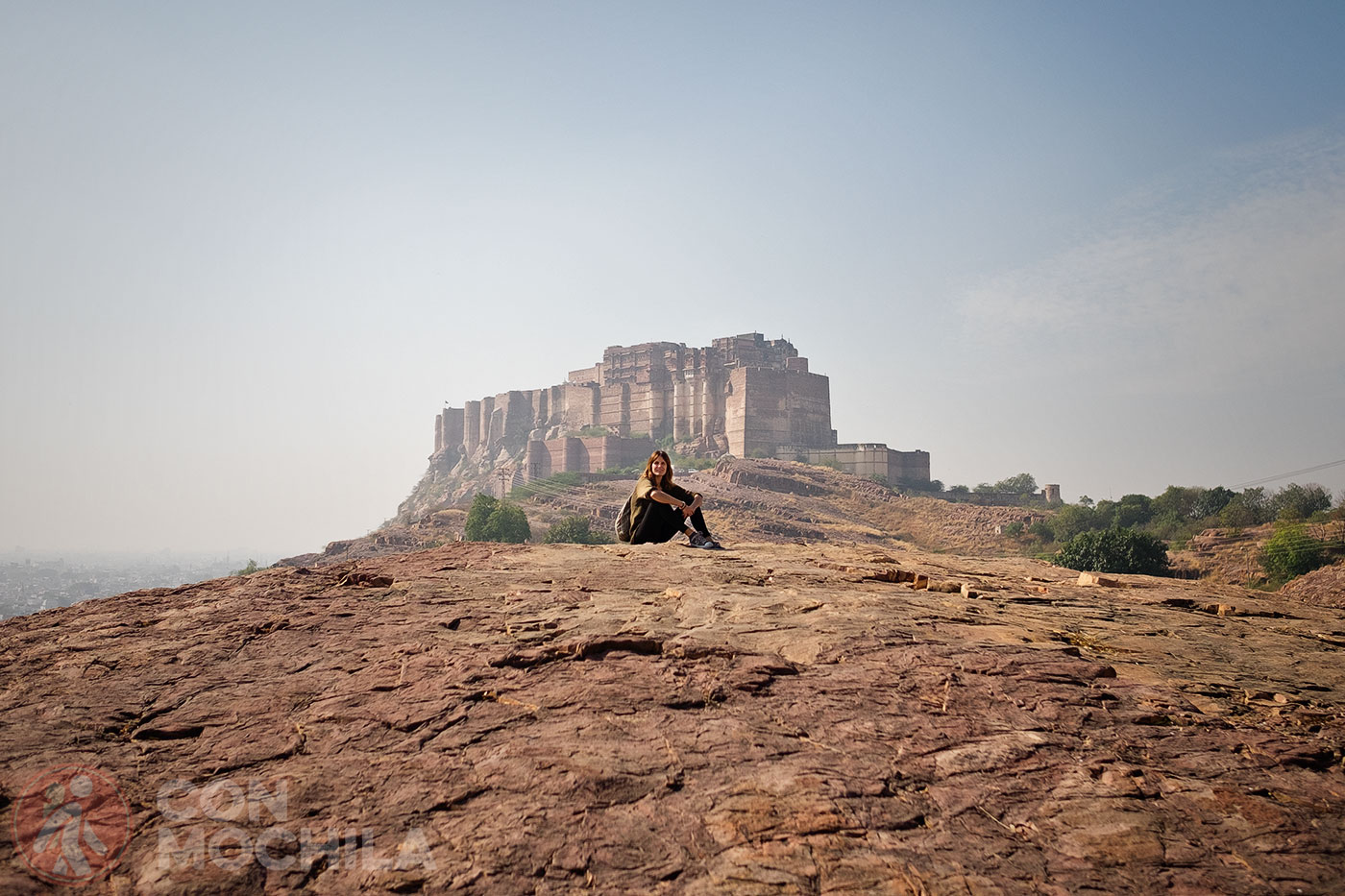
However, for those on a tighter budget, you can climb a section to enjoy the views of Jodhpur before reaching the ticket office area.
Just a kilometer away from the fort we find the Jaswant Thada, a mausoleum with royal cenotaphs. It stands out due to its white marble walls, which almost shine when seen from a distance, and the beautiful setting in which it is situated, with a lake inhabited by different species of animals (as well as the hundreds of pigeons that fly over the building).
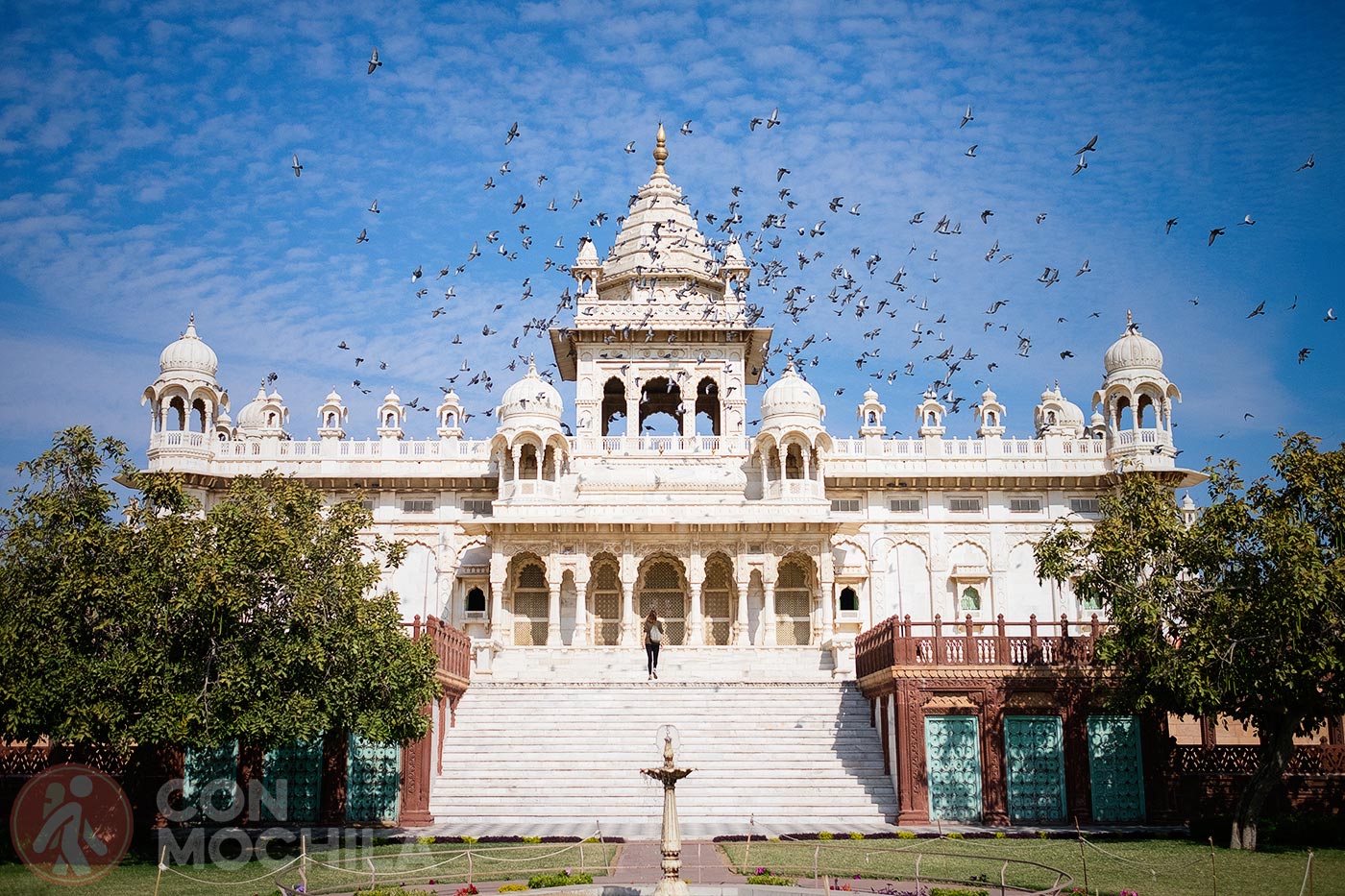
The price for the visit is considerably cheaper, 30 rupees, to which you have to add a few more if you enter with a camera. As with the fortress, which by the way offers an unbeatable panoramic view from here, most of the tourists are domestic.
Half of the Umaid Bhawan Palace is still the current home of the Maharaja of Jodhpur Gaj Singh and his family, and the other half is a five-star Taj hotel, which is not surprising considering the palace has 347 rooms.
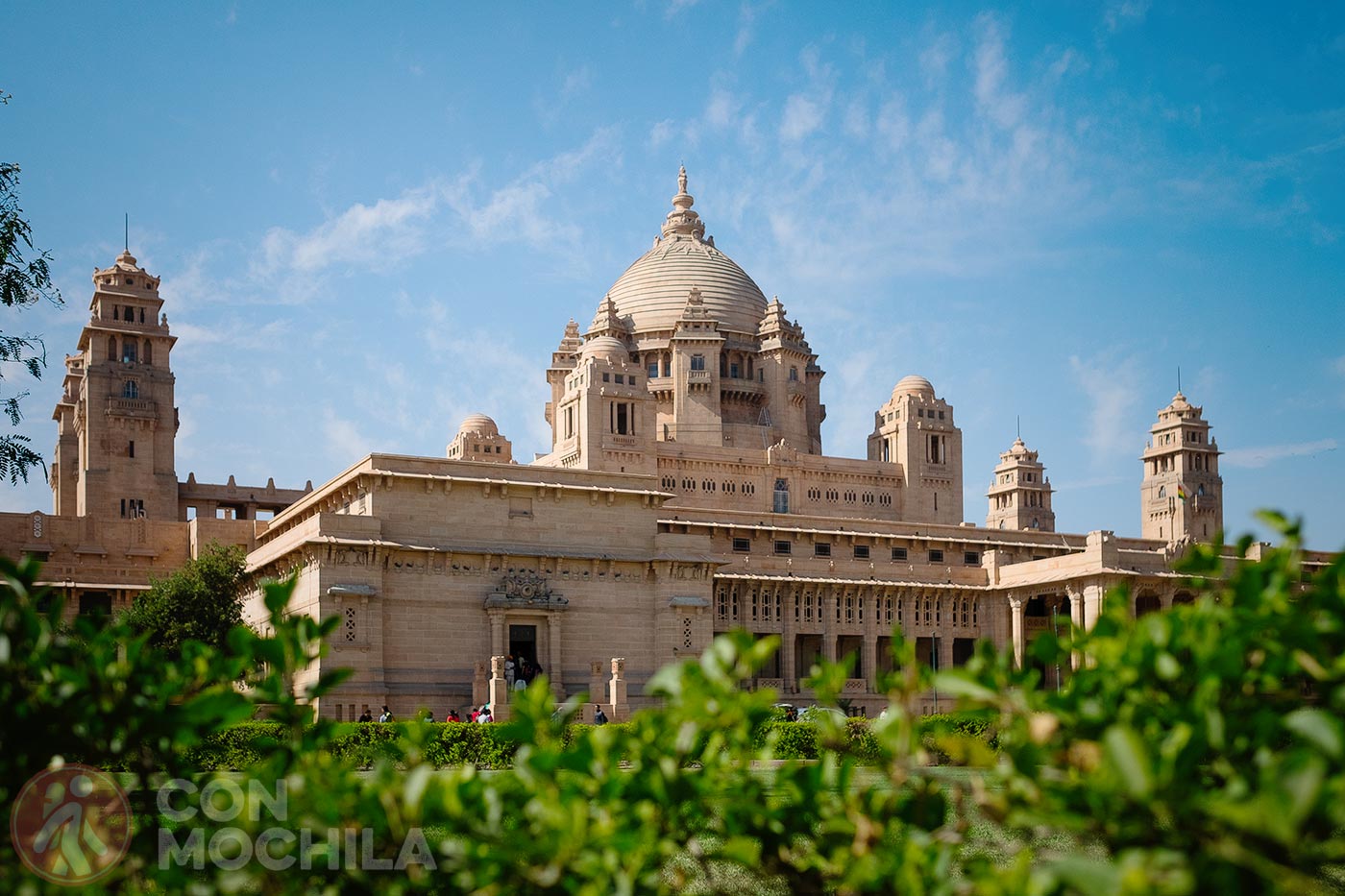
What’s a backpacker missing in a place like this? Well, maybe not much, but if you’re interested in (Royal) history, or you’ve got some time left and are looking for something to do, you might find it interesting to take a stroll through the museum, where paintings and all kinds of belongings such as gifts, vases and furniture from the maharaja’s family are on display. At the entrance there is also a small exhibition of vintage cars.
The Ghanta Ghar clock tower is located in the middle of one of Jodhpur’s most varied markets, Sadar Market. In its stalls you will find food and everyday items that the city’s inhabitants buy, but there is also interesting stuff for tourists: colorful fabrics, hundreds of patchwork pieces with elephants, hippie pants…
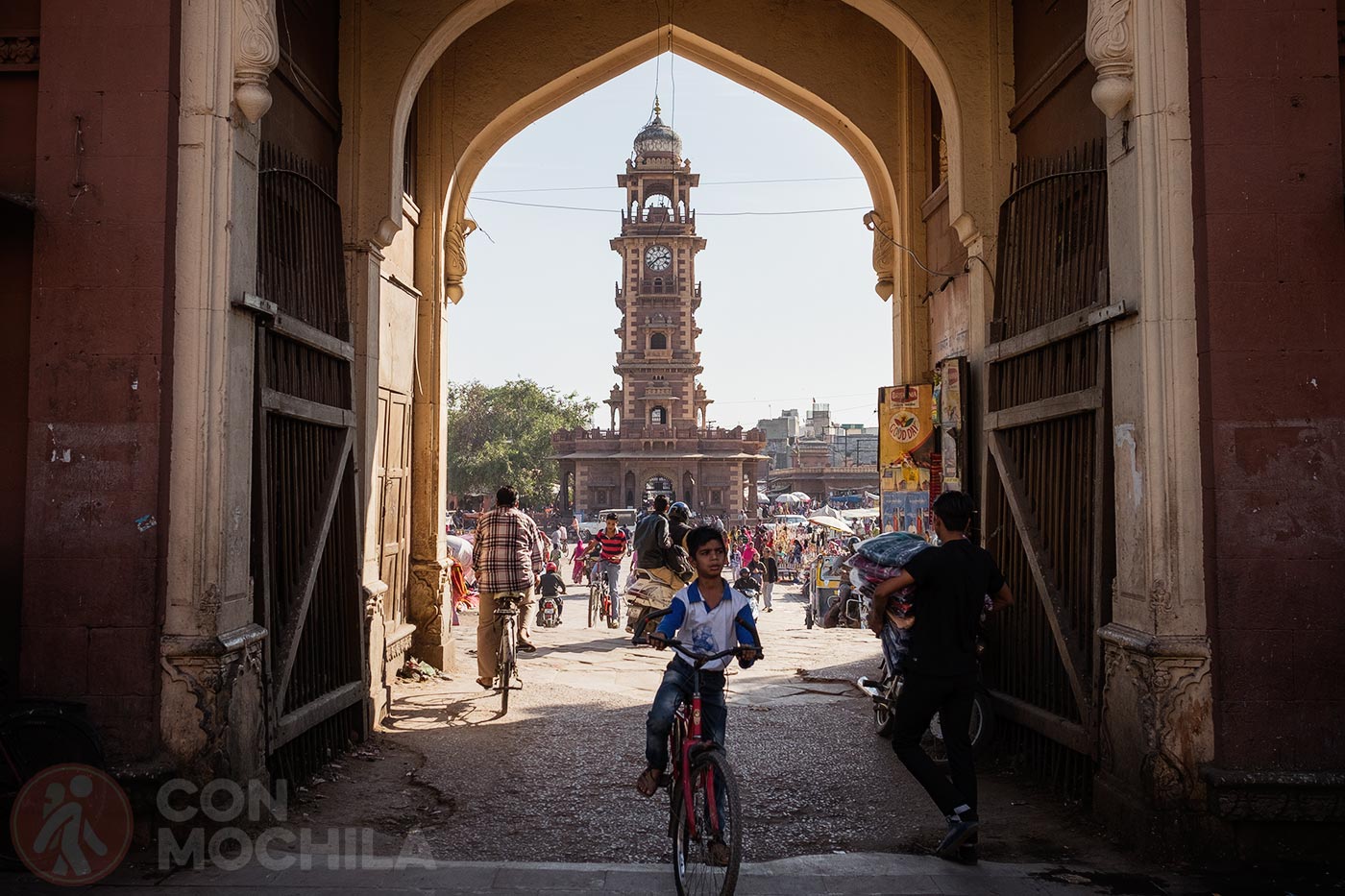
In the labyrinthine streets of Jodhpur, it is easy to get lost, especially at the points where the fort is no longer visible and the point of reference disappears. Walking through the center means jumping over stalls, dodging frenetic rickshaws, suffering from stray dogs, asking permission from the puny cows to pass and stumbling upon hundreds of temples and altars.
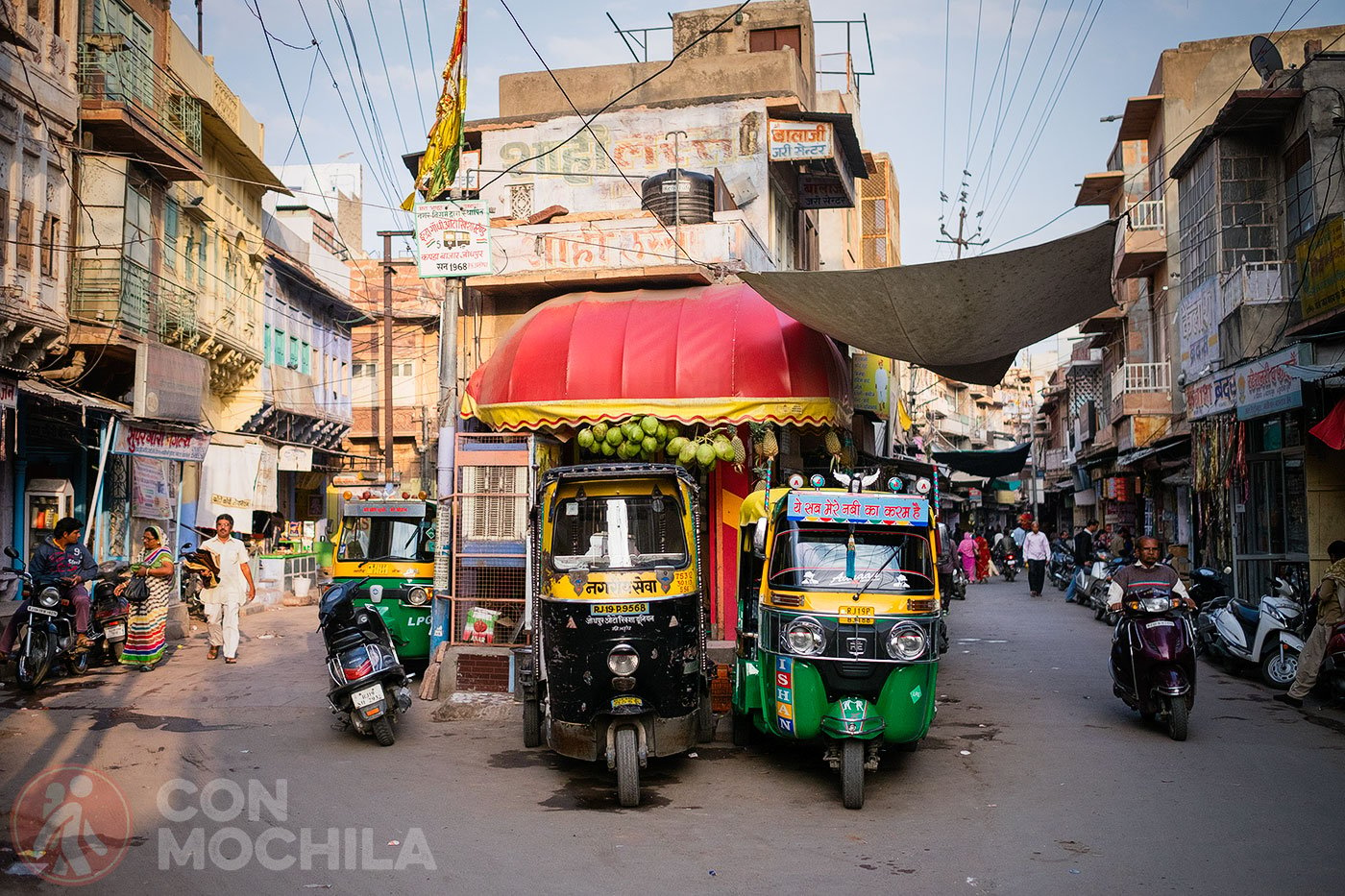
There are several places to buy spices in Jodhpur, such as markets. However, we would like to recommend one place in particular where we went crazy and smelled so many spices that our noses were saturated. MV Spices.
From there we bought some magic powders with which we have been cooking and making chai for a long time. A delight, if you like to cook!
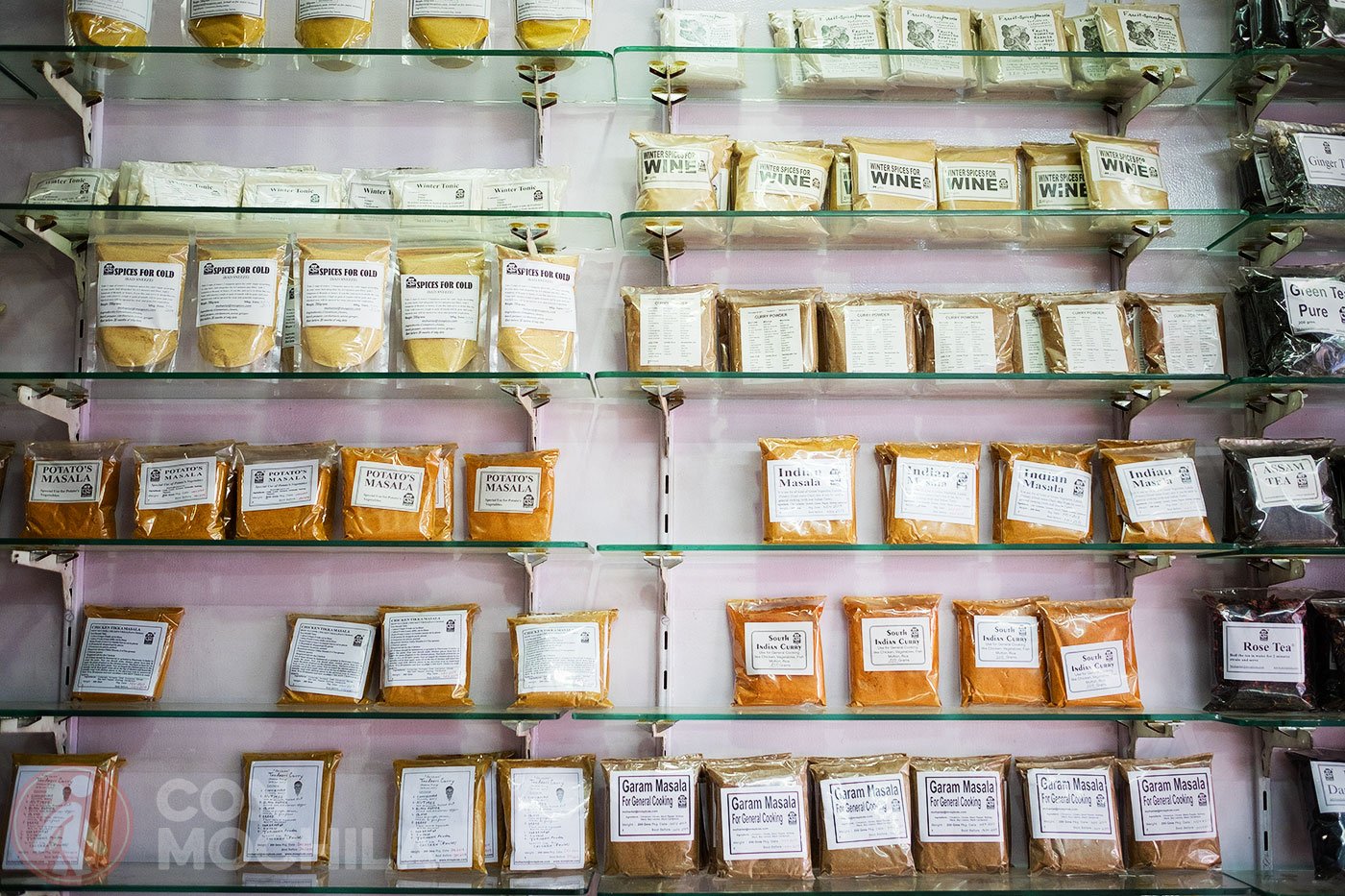
If Jodhpur hasn’t been enough for you in a day or two and you still want to see more, you can take a trip and see the surrounding area. Just a few kilometers away, you find the ancient city of Mandore and the Khejarla Fort. If you’re tired of seeing buildings and want a change of scenery, you can visit the Rao Jodha Desert Rock Park or a couple of lakes such as Kailana Lake and Gulab Sagar Lake.
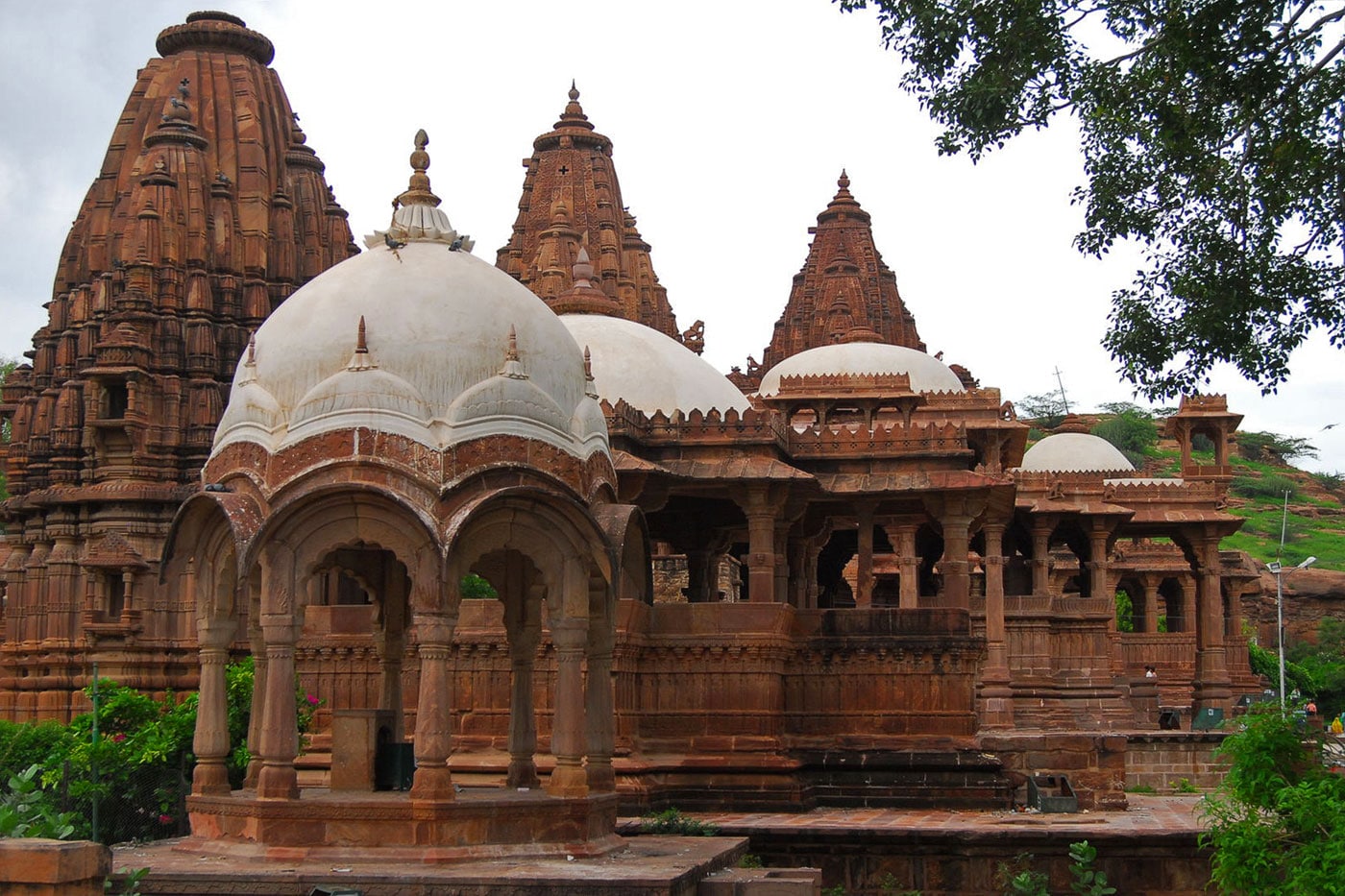
Halfway between Jodhpur and Udaipur you can also visit the Kumbhalgarh Fort, a World Heritage Site considered the second largest wall in the world after the Great Wall of China.
As always in tourist destinations in India, the variety of places to stay in Jodhpur is enormous, as evidenced by the dozens of offers you will be given when you leave the train station and the rickshaw drivers start chasing you.
If you fancy feeling like a maharaja and can afford to go a little over budget, you can stay at Singhvi’s Haveli, which is a bit run-down so it doesn’t clash with the rest of the city, but has some huge rooms and beautiful views from its terrace (although this is not exclusive to this haveli). It also has a restaurant, where they prepare thalis every day.
You can also take a look at these recommendations:
Desert treks have become a very popular tourist activity, visiting some small villages along the way and sleeping rough in the dunes. Most of these tours offered in Jaisalmer are done by camel and, besides not being the most comfortable way to do it, not all companies treat their animals equally.
We recommend that you read this valuable information from FAADA before booking any tour.
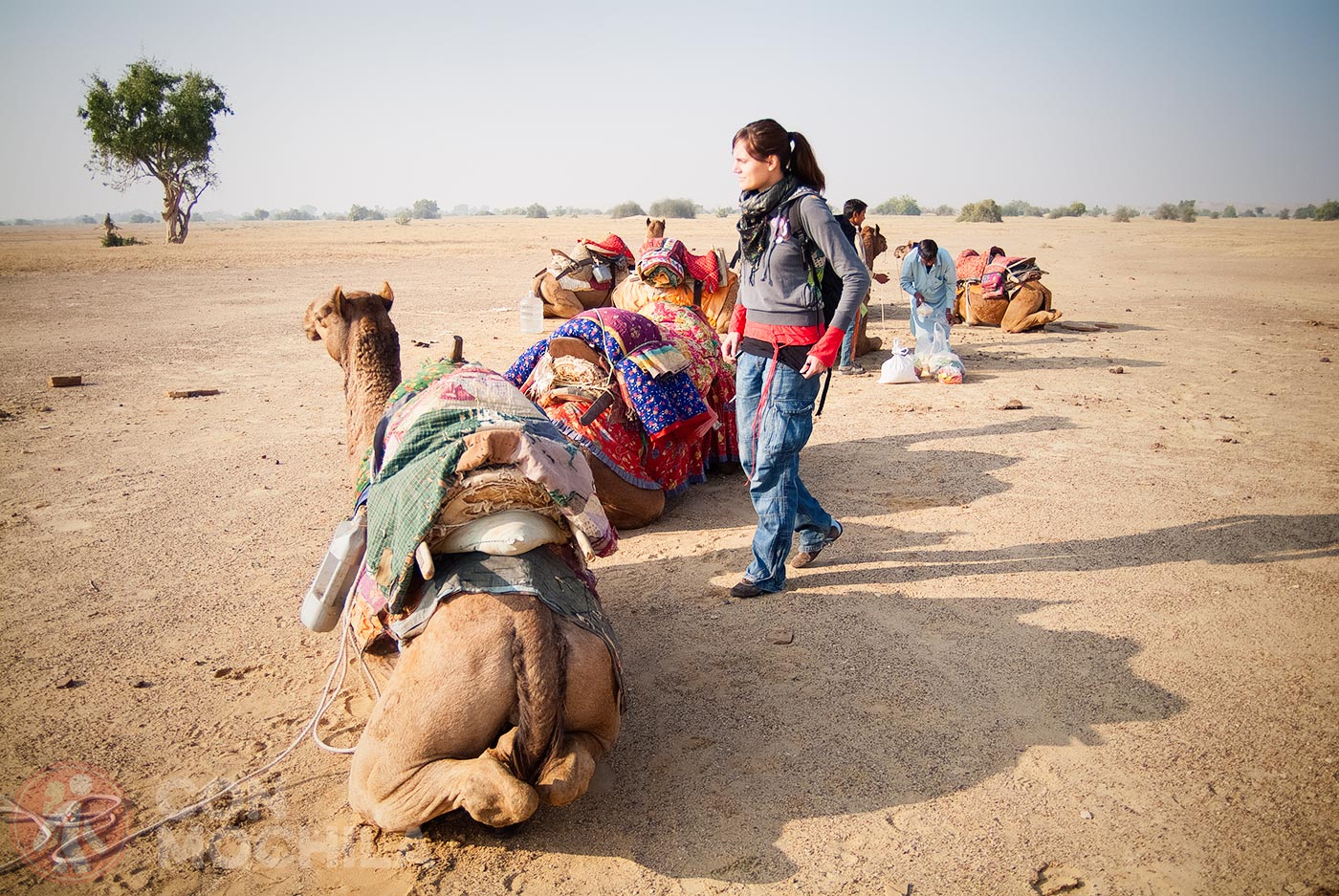
The best option for getting around the city center is to walk, so as not to miss a single detail and avoid traffic jams. However, always pay attention to the vehicles and wildlife that control the streets, as obstacles (motorbikes, cows, dogs…) appear everywhere and often do not give any warning.
If you need a rickshaw to get around the area, compare prices, as some drivers will not hesitate to ask you for an excessive amount when they see your newcomer’s face.
Click on the image and it will take you to a new Google Maps window with all the points of interest to travel around Jodhpur.
ACTIVE CAMPAIGN !
Until december 1st, you can get an automatic 15% discount on your Heymondo travel insurance.